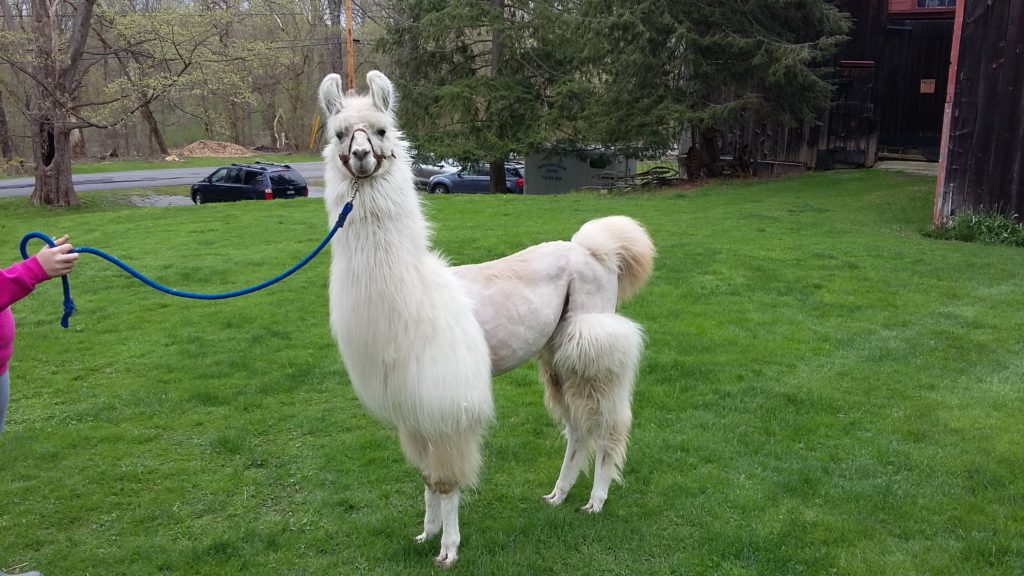In the past few years, llamas became so prevalent in our society as farm animals. Learning more about what llamas eat can make your farm management more effortless. Some of us may think llamas may need expensive feed rather than cows or goats, but the interesting facts about llamas are that they need 25% less feed than other domestic animals.
About of llama:
Few people are questioning “Are llamas and camels related?” Yes they are. The llama is a South American cousin of the camel, but it does not have a hump. Llamas scientific name is Lama Glama which has similar characteristics to an alpaca. No clear evidence can be found “where are llamas from?”, but in the 14th century, the indigenous people of South America used llamas for fuel, food, religious ceremony, transportation and clothing.
Llama-like animals like to live together. Do you know what a group of llamas called? A group of llamas called ‘herd’. The herd of llamas can be seen near the forage. They can acquire easy tasks after several repetitions and react to their name being called.
These camelid mammals are well known for their long legs and necks, with eye teeth projecting and burst upper lips. They are larger in size, curved ears and long heads. They have very soft wool, which is lanolin-free. Their size and colors may vary, like white, brown, piebald, grey or black. Fully grown llamas can be 6 feet tall and 250-pound weight.
Type of llamas:
There is only one type of llamas that can be found in nature, named llama glama, but they also have other genres. As llamas and camels are related, there are a total of 5 different types of llamas in the camelid family, Vicugna, guanaco, Suri alpaca, Huacaya alpaca and Llama glama. Guanacos and Vicunas survive in the wild, where llamas and alpacas keep for domestic purposes.
The fun facts about llamas are they have oval-shaped red blood cells containing unusual hemoglobin levels that allow them to survive at an adequate oxygen level. So they can easily live in a hilly area where they don’t face a lack of oxygen level. They also have a complex stomach with three separate compartments of rumen, abomasum and omasum to consume low-quality, high-cellulose foods.
Furthermore, the llama’s surprisingly long and complex large intestine absorbs water, vitamins, and electrolytes from food waste. The llama’s colon is much longer than other animals’, allowing it to live on much less water. For this reason, they can easily live in desert and dry climates.
Eating habit of llama:
The majority of Llamas’s diet is vegetation like fruits, grains, seeds, nuts, tubers, roots, and various plants. So they are basically herbivorous. They like to find forage to fill their stomach and eat during the whole day time. At night they want to sleep and rest. They like to surf around and look for food in low shrubs, lichens, a wide variety of mountain plants, and plant fluids such as sap, much like other grass-fed creatures.
Llama can regurgitate like other grass-fed animals. They chew the cud and then proceed to consume many vegetation types. Furthermore, they are not picky eaters and enjoy a range of treats with fruits and fresh vegetables such as carrots and broccoli. Usually, the daily feed quantity depends on dry matter, which means they’ll need more feed if eating pasturage. Below is the main source of feed which they like to take from:
You may also like: What Do Sheep Eat?
Forage:
Forage is a vast, wild area where grass-fed animals search widely for food or provisions. Llamas need forage to keep their digestive system working correctly with the fibre and nutrients. More than that, they need 1 to 1.5% of forage daily to remain active and healthy. This herbivorous nature habitat takes fescue, timothy, orchard grass and legumes such as alfalfa and clover as a forage feed.
Grain or cereals:
It’s not always possible to arrange a considerable quantity of hay and grass. In that case, grain can help to fill the stomach instead of the grass. It is not required, but most importantly, grain should not make up most of a llama’s diet. Grain is deficient in fiber and minerals, which are important for llamas’ health. However, it can help supplement protein to llama’s nutrition.
Supplements and treat:
Llamas like to take treats of different fruits and veggies. Apples, pears, oranges, bananas, grapes, apples, watermelon, cantaloupe, mango, carrots, pumpkin, broccoli, celery, sweet potato, and other fruits and vegetables are among Llama’s favorites. Sodium, chloride and dietary copper are important in llamas diet to stay healthy. But avoid too much copper as it is toxic.
Toxic food for llama:
Llama dislikes artificial feed, mainly horse feed. Moreover, horse feed is high in copper and other minerals that can be harmful to them. Also, sweetened food or other highly sugared food should be avoided, which can be hard to digest for llamas. Naturally, sweet plants like Jagard are not healthy for them.
Sometimes Llamas diet is notably challenging to understand and also confusing. They eat much different food to survive. Nutrition can affect their overall health, breeding, milk production, heat stress and wool quality. That is why a good diet is crucial to a comparatively problem-free flock of llamas. It should contain regular calcium, energy, fiber, protein, salt, vitamins, phosphorus and minerals.
You may also like: What Do Goats Eat And What Not?
Typical behavior of llama:
Llamas prefer to live in herds and move around in groups. Normally a group of llamas is called ‘herd.’ They are social and curious by nature as well as they can live together with other domestic animals without any problems.
They get accompanied by humans very easily. In any kind of danger or threat, they make a strange sound to alert each other. This sound is also used as their internal communication. They are sensitive when abused or mistreated and react by rounds of spitting, kicking and biting. Do you know why do llamas spit? Llamas do spit each other or even humans if they feel irritated or abused.
Llamas are nature’s greatest warriors for decades. They are active livestock guards in preventing predation. So, many people called them warriors as they perform the livestock protectors so well. Larger predators, such as coyotes and wild cats, are frightened of llamas because of their powerful kick.
Baby llama:
Llamas have a unique reproductive cycle of 350 days, almost 1 year, which is different from other domestic animals. Male llamas do not achieve sexual maturity until they are about three years old, and females do not reach puberty until they are about 12 months old. After mating and a long 11.5 months incubation period, a baby lama is born.
A baby llama name is cria, which is a Spanish term that means “baby. “At birth, all-female llamas gather together to protect the baby from the male llamas or other predators. For this behaviour, they called guard llamas. Baby llama delivery happens in less than 30 minutes of a problem-free standing position. Most of the deliveries happen in the time duration of 8 am to midday so baby cria can survive during the cold nights.
After the first hour of birth, the baby cria can stand and walk naturally.They also try to drink their mother’s milk, which is lower in fat and salt but higher in phosphorus and calcium.The cria frequently sucks the milk and gets about 60 ML of milk at a time which is full of nutrients.
Usage of llamas:
For a few decades, llamas were used as load animals in the mountain area by a different tribe, especially by the peoples of the Andes Mountains. They can easily carry up to 80 pounds of loads and cover 25 miles in a single day. Typically, they can carry weights in a rough environment easily.
Differing from this, if they are overloaded, they might react by lying down on the floor and refusing to move on. Even sometimes, they vomit, spit or kick the owners to deny to carry the loads. So in the hilly area, llamas contribute a lot to the purpose of transportation.
Also, as good guards, some landowners give the responsibilities to protect their domestic flocks to llamas. They could alert the owner or the flock animals by their strange loud noise if any possible threatened nearby. Importantly, Humans are benefited in several ways by llamas, like llamas’ wools are very soft to make rugs, ropes, and fabrics, also durable for long term use. Leather is made from their skins to make different designs of bags or shoes. Even their manure is useful when it is dried and used as fuel while cooking. Some people ask the question that can you eat llama? The answer to this question is yes, their meat can be delicious food on the human menu with proper nutrition.
You may also like: Why Do Chickens Eat Feathers?
Buying price of llama:
If you plan to have one or few llamas to keep for a domestic purpose, it’s better to know the different llamas’ price range. However, prices may vary on the llama’s age, breeding, size, gender, farm reputation, health and other factors.
Typically, quality llamas will begin at $800 up to $25,000 occasionally, sometimes more. Female llamas are higher in price, and male llamas are lower in price. Also, the price may vary between trained and untrained llamas. Trained llamas are higher in price than untrained ones. A high-quality llama used for breeding purposes is the most demanding and expensive one.
Basic llama care:
Llamas are designed to adapt to a harsh environment. However, they need few cares to stay healthy and disease-free. They are lovely animals that require little maintenance beyond good primary care. If you want to keep a llama as a pet, you’ll need to have the following basic care:
- Give a clean and fresh supply of hay and water for your llama.
- Avoid feeding llamas grains and seeds unnecessarily.
- Avoid overfeeding your llama; otherwise, it may spit, or bowel problems may occur.
- Supplement your llama’s feed with a salt or mineral block rich in selenium, calcium, and phosphorus.
- Treat your llamas with love and try to groom them often.
- Shampoo and condition the llama with a high-quality shampoo and conditioner.
- Llamas wool can be affected by several parasites that need to be killed with medicines or pesticides approved for cattle use.
FAQ:
Below you’ll find answers to questions we get asked the most about what do llamas eat:
01. what does a llama look like?
Llama looks like a camel without a hump. Also, their feet are shorter and separate with having a different plantar pad than a camel. The 5 to 6 feet llama has a long and curved banana-shaped ear and has a short tail. Overall, the woolly and fluffy llama is readily recognizable due to its distinct appearance.
02. How tall are llamas?
A full-size llama is tall between 5 to 6 feet. At birth time, a baby cria is tall like a goat, but they can grow faster at the growing age.
03. What are llamas good for?
Llamas are versatile and valuable in different ways. They are mainly good as a source of fibre, pack animals, companion animals and livestock guardians.
04. Do llamas eat berries?
Yes, llamas like to eat berries, but remember the amount should be limited. The diet should be made up of grass and hay mostly. Berries like strawberry, blueberry, raspberry can be given as an occasional treat.
05. Do llamas eat weeds?
Yes, llama likes to take weeds and hay as their regular diet. They are very moderate eaters and able to digest many different weeds and grasses in a hilly area.
06. How long can llamas live?
Llama can live up to 20 years. But sometimes, some individual llama can live up to 30 years, not more than that. So the average life expectancy of a llama is 15 to 25 years.
07. Do llamas eat peanut butter?
Llama is a herbivorous animal. They take forage and vegetation, including hay, grass, weeds, and shrubs. Peanut butter is a toxic food for them. The texture of peanut butter is choking for a llama. So always avoid peanut butter as it is dangerous for them.
08. How much food does a llama eat a day?
Llama can consume about 1.5% to 2% of hay and vegetables daily, depending on their body weight. Approximately 10 to 15 pounds of feed and plenty of freshwaters they take every day.
Conclusion
Those who are not habituated with farming llamas can surely start with few llamas first and gradually increase them. It will take some time to find out what llamas eat and how they behave. Llamas are vegetarians with highly effective digestive systems, so you just need to feed them a small amount of food. Also, llamas are intelligent and effortless to train.
In general, they play an important role in our environment and the food chain of animals. I hope this article may motivate you to set out with these curious creatures on your farm.
Related Post:





